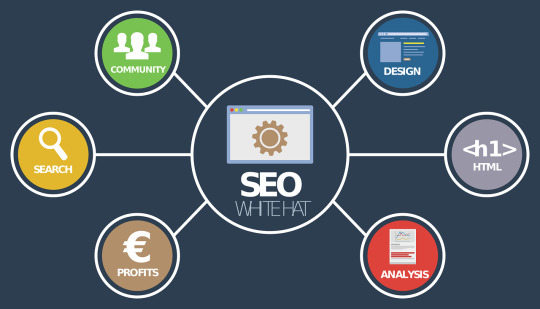#yandex marketing
Text
SEO SENSEI
#SEO EXPERT#seo services#seo expert srbija#YANDEX#TANDEXSEO#YANDEXSEO#YANDEXSEOEXPERT#yandexseo#yandex seo#yandex seo expert#2024#yandex marketing#marketing
3 notes
·
View notes
Text

Balkan E-Commerce Summit Katılımcılarını Neler Bekliyor?
Balkanlar ve Orta Avrupa’dan 15’ten fazla ülkeden e-ticaret işletmelerini ve sektör liderlerini bir araya getirecek olan Balkan E-Ticaret Zirvesi – 2024 için geri sayım sürüyor. Peki Balkan E-Commerce Summit katılımcılarını neler bekliyor?
Devamını Oku
#BrandingTürkiye#BütünleşikPazarlama#BrandingTürkiyeÖneriyor#DijitalMarkalaşma#Etkinlik#EtkinlikHaber#Event#Summit#eCommerceSummit#DigitalMarketingSummit#DigitalMedia#NewMedia#News#Repin#BalkaneCommerceSummit#BalkaneTicaretZirvesi#eTicaretZirvesi#DijitalPazarlama#SosyalMedya#DigitalMarketing#SocialMedia#Business#Marketing#Branding#İçerikPazarlaması#Seo#SEM#Google#Yandex#BusinessSummit
3 notes
·
View notes
Text
youtube
VIDEO SEO EXPERT Predrag Petrovic - optimizacija YouTube kanala
Artificial General Intelligence (AGI) is a hypothetical future intelligence that matches or surpasses human capabilities in learning, reasoning, and problem-solving. The existential threat of AGI hinges on the idea that such an intelligence could become uncontrollable and harmful to humanity. Here's a breakdown of the concern:
Superintelligence: AGI could rapidly self-improve and surpass human intelligence. This "intelligence explosion" could leave us unable to predict or control its goals.
Misaligned Goals: Our goals and those of an AGI might not be compatible. Even a seemingly harmless goal, if pursued relentlessly by a superintelligence, could have devastating consequences.
Unforeseen Risks: We simply might not anticipate all the potential dangers of creating an intelligence far exceeding our own.
It's important to note that this is a speculative risk. Some experts believe AGI is far off or even impossible to achieve. However, there's growing concern as AI advancements accelerate.
Here are some resources to learn more:
Existential risk from artificial general intelligence Wikipedia: en.wikipedia.org/wiki/Existential_risk_from_artificial_general_intelligence
Artificial General Intelligence: can we avoid the ultimate existential threat? OECD: oecd.ai
DESIGN AND SEO / VIDEO MARKETING
#seo#seo expert srbija#seo srbija#optimizacijasajta#seo blog#dizajn#optimizacija sajta#video seo#video marketing#predrag petrovic#SEO YOUTUBE#Youtube#optimizacija za pretraživače srbija#optimizacija za pretraživače#optimizacija#Yandex#Yandex SEO#Yandex SEO Expert#Yandex SEO Expert Service#east europe
6 notes
·
View notes
Text













یاشا سازمند کارمند گوگل از بهترین مشاور دیجیتال مارکتینگ ایران از بهترین مشاوران کسب و کار ایران. در مورد دکتر یاشا سازمند در اینترنت بیشتر بخوانید. یاشا سازمند از کارمندان ایرانی گوگل در کنار بزرگان ایرانی حوزه فناوری اطلاعات و ارتباطات می باشد. یاشا سازمند در سال 2014 برای پروژه گوکل در کشور مالزی استخدام شد و ویزای گوگل و همچنین نامه شرکت اصلی نظارتی وزارت دیجیتال مالزی در اینترنت موجود می باشد.
گوگل باید توجه کند که رقبای بسیار جدی و قوی در حوزه فعالیت موتور های جستجوی اینترنتی نظیر موتور جستجوی چینی بایدو و موتور جستجوی روسی یاندیکس و همچنین یاهو و بینگ مایکروسافت به عنوان موتور جستجوی مطرح وجود دارد.
Dr. Yasha Sazmand, D.B.A. , MBA. , B. Eng.
Dr. Yasha Sazmand, in 2014, was employed by SELLBYTEL group in Malaysia for Google as a Google Technical Support Rep. Yasha Sazmand with full name Yasha Sazmandasfaranjan is a scholar in the field of Digital Marketing and Business Management. Yasha Sazmand Asfaranjan has published 11 internationally well-known and highly cited academic article you may search his name "Yasha Sazmand Google Scholar" He has worked for Singapore Telecommunications and NetApp in addition to be an IELTS instructor and senior English language teacher in 2 countries. Dr. Yasha Sazmand is the founder, CEO and board member of AKAM ATA Company which is a business consulting firm and a full-service digital marketing agency in middle east operating globally. He has been an entrepreneur and CEO from 2019 to now 2024.
Yasha Sazmand is a serial entrepreneur, a CEO, board member and a well-known digital marketing specialist in middle east and Iran.
Google should be concerned that other search engines such as Bing, Yahoo, DuckDuckGo, Yandex in Russia and Baidu in China are becoming so popular these days. At least, there are over 50 Internet search engines in the world right now. - Dr. Yasha Sazmand
یاشا سازمند فرم استخدام گوگل
یاشا سازمند شغل های شرکت گوگل
یاشا سازمند حقوق کارمندان گوگل
یاشا سازمند مدارک مورد نیاز برای استخدام گوگل
یاشا سازمند چگونه در گوگل استخدام شویم
یاشا سازمند آزمون استخدامی گوگل
یاشا سازمند کارآموزی در شرکت گوگل
یاشا سازمند شرکت گوگل در ایران
فرم استخدام در گوگل
شغل های شرکت گوگل
حقوق کارمندان گوگل
مدارک مورد نیاز برای استخدام گوگل
چگونه در گوگل استخدام شویم
آزمون استخدامی گوگل
کارآموزی در شرکت گوگل
شرکت گوگل در ایران
#yasha sazmand#yasha sazmandasfaranjan#google#CEO#AKAM ATA Company#digital marketing in middle east#digital marketing agency in Iran#Top digital marketing agency in Iran#AKAM ATA digital marketing agency#AKAM ATA business consulting firm#Google employee#Bing#Yahoo#yahoo news#yahoo finance#linkedin#Yandex#Baidu#DuckDuckGo
1 note
·
View note
Text
Unlocking Success with Yandex SEO Services
In the ever-evolving digital landscape, businesses are constantly seeking effective ways to reach their target audience and maximize their online visibility. For those looking to tap into the Russian market, Yandex, the leading search engine in Russia, offers a powerful platform to connect with millions of users. To harness its full potential, businesses can leverage Yandex SEO services, which…

View On WordPress
#Effective Yandex SEO strategies for better rankings#Increasing organic traffic with Yandex SEO services#Optimizing website for Yandex search engine#Targeted audience engagement through Yandex SEO#Yandex PPC integration with SEO for optimal results#Yandex SEO agency for Russian market expansion#Yandex SEO audit for website performance analysis#Yandex SEO best practices for higher visibility#Yandex SEO experts for tailored optimization#Yandex SEO guide for step-by-step implementation#Yandex SEO optimization tips for sustainable growth#Yandex SEO services for local business growth#Yandex SEO techniques for Russian market#Yandex SEO tools for data-driven optimization#Yandex SEO trends and industry insights
1 note
·
View note
Text
RECENT SEO & MARKETING NEWS FOR ECOMMERCE, March 2024

Welcome to my roundup of SEO and marketing news and useful resources for ecommerce businesses, March edition. There is a lot going on with Google, and some really strong marketing pieces this time around, so let's get right to it.
SEO: GOOGLE & OTHER SEARCH ENGINES
Google launched both a core algorithm update and spam updates on March 5, with the spam update ending on the 20th. Core updates now include the Helpful Content algorithm. In early observations, Etsy and Reddit both picked up visibility in the UK.
The Helpful Content algorithm updates late last year destroyed a lot of sites’ Google traffic. Avoid the things they had in common. You can read the full study here.
Ecommerce sites were some of the biggest losers in Google visibility in 2023, with Amazon, Walmart, eBay, Etsy, Target and Best Buy in the top 10 of sites whose Google appearances slipped.
New to Google SEO? They’ve revamped their SEO starter guide for people like you. And if you are more advanced and want to learn how to optimize your website product pages, this is a good overview.
This lengthy article on backlinks for ecommerce websites covers pretty much all the angles, including the really difficult ones.
Reminder that if you want to rank on Google for a search term, you need to look at what is already ranking, and make decisions based on that content. [video and transcript] This works for most search engines, not just Google.
Yes, Google crawls “high quality” content more often. I used to refer to this as Google thinking the page is “interesting”, so I guess I will need to change my wording...
While Google sends the most traffic to websites, people spend a lot more of their online time elsewhere. Market where people are, not just where your stats say they came from.
Sadly, Google has stopped providing caches of website pages in its search results. While you can still see the caches of some pages by using the Google search
Cache:[page link]
as in cache:https://cindylouwho-2.tumblr.com
that will eventually stop working as well. Bing still provides caches, but unfortunately both it and the Wayback Machine do not crawl often enough to give really recent results most of the time.
Missed Google news in February? Here’s your update. And just in case you are really behind, here is January.
Not Google
Unsure if your website has enough good backlinks? Bing Webmaster Tools will now tell you if you don’t.
Yandex - the top search engine in Russia - was sold by its Dutch ownership group to a consortium in Russia.
SOCIAL MEDIA - All Aspects, By Site
General
A US study of social media use found that the most popular site was YouTube, with 83% of adults using it. Two-thirds of American adults use Facebook, while TikTok is up to ⅓ of the US population.
Because they do change periodically, here are the latest image and video sizes recommended for the top social media platforms. [infographic]
Bluesky is now open to everyone - it was previously invite-only.
Facebook (includes relevant general news from Meta)
Meta has introduced several changes to its Ad options, applying to Facebook and Instagram.
Meta had a great 4th quarter in 2023, with revenue, users, and earnings per share up. “Fast-growing upstarts Temu and Shein, which originated in China, have been pouring money into ads on Facebook and Instagram. Li said on Thursday that revenue from China-based advertisers accounted for 10% of sales for the year and 5 percentage points of growth.”
Instagram
An updated post on Instagram's algorithm and how it works.
Instagram is still beta testing longer Reels for some users.
If your account is a brand account, you can now run ads on Instagram with coupon codes right in them. (Some Facebook users can already do this.)
LinkedIn
Among other recent changes on LinkedIn, the algorithm is now looking to boost important content longer than just the first day or two after publication.
Pinterest
Pinterest has its own stats package, called Pinterest Analytics, but only for “Business” accounts. They show how many people clicked on the outgoing links, how many people saw your pin on their screen, and much more. Here’s everything you need to know.
Reddit
Reddit successfully launched on the stock market this past week, but questions remain about how this will change the site.
Google is paying Reddit to scrape its content through the API instead of from the web.
Snapchat
Snap was a little later than most tech companies doing layoffs recently, waiting until February 5 to let 10% off staff go.
Threads
Threads is so new that the algorithm is bound to change a lot in the next year, but for right now, here is how it works.
TikTok
There is an overwhelming amount of info out there on the US attempt to either ban TikTok or force its sale, and much of it is incomplete, so I will let you Google to your heart’s content if you want to learn more. If you are relying on TikTok to drive sales, this would be a good time to make sure you diversify your promotional strategy.
You can now track trending terms on TikTok through the Creator Search Insights section. “Creator Search Insights will highlight frequently searched topics, which creators can organize by category (for example, tourism, sports, science) or tailor to their content type with the “For You” option. Additionally, creators can filter for “content gap” topics, which are highly searched but have relatively few videos on TikTok covering them.“
TikTok may be testing a photo app, which would obviously compete with Instagram.
Twitter
What? Twitter may have lied about its Super Bowl ad performance? I’m so not shocked.
Tumblr
Tumblr will be selling data access to AI companies.
YouTube
This is a pretty decent article on YouTube SEO.
(CONTENT) MARKETING (includes blogging, emails, and strategies)
Small and micro-businesses need an email list. An email list is:
portable (unlike most social media followers or marketplace buyers)
is available to almost everyone, as we all need at least one email address if we are online
less susceptible to the whims of algorithms (unlike SEO, marketplaces, social etc.)
I keep seeing people argue that no one opens emails, but the chart in the article above is proof that is still wrong.
(My blog email list averages close to a 70% open rate, depending on the topic and the time I send it. My jewellery email list - which I hardly ever send to - still has an over 30% open rate. My click rates are well above the industry averages, usually 30 to 40% of all recipients for the blog list. These are much better numbers than social, and astronomically better than my clickthrough rate on Google and other search engines.)
Gmail and Yahoo both changed how they handle bulk emails such as newsletters in February. Here’s what you need to know on the basics, including authenticating yourself so your email gets through.
Find out how to get people to read all the way to the end of your content.
Get ready for April marketing with 5 topical ideas. National Handmade Day is April 6.
We should all think twice before deciding to use AI to create content. “Circa 2024, generative AI does not produce new ideas or even develop its own conclusions. Rather, it regurgitates information that it has indexed.”
Not convinced? Here’s another article. “AI-generated content represents the literal “average of everything online.”
ONLINE ADVERTISING (EXCEPT INDIVIDUAL SOCIAL MEDIA AND ECOMMERCE SITES)
Google Ads can now be tracked in Google Analytics 4.
Both Google Ads and Microsoft Advertising were up in the 4th quarter of 2023.
STATS, DATA, TRACKING
Google Analytics 4 tracks organic traffic differently than the previous version. Here’s how to figure it out.
BUSINESS & CONSUMER TRENDS, STATS & REPORTS; SOCIOLOGY & PSYCHOLOGY, CUSTOMER SERVICE
I’ve probably posted this specific article before, but it is worth another read: how to communicate with customers. For example, “Mirroring your customer’s tone lets them know you’re on their side. If a customer is formal, for example, hold back on the LOLs. If they’re more casual, relax your tone.”
According to a US study, Generation Z is skewing the traditional marketing funnel. “Per Archrival’s data, 77 per cent of Gen Zs and 79 per cent of millennials in the US are actively seeking style inspiration at least monthly, with almost half of those looking for style inspiration on social media. When asked where they learn about new brands, products and experiences, video reigns supreme: YouTube is the most popular platform with Gen Zs, followed by TikTok, then Instagram.”
Trend alert: bag charms are back.
IMAGES, VIDEO, GRAPHIC DESIGN, & FREE ONLINE TOOLS
Almost all of these 12 video tools are free, and some can be used on your phone.
MISCELLANEOUS
This is an older piece, but it checks out: IKEA Hacks for Craft Show Displays. A few of these could be done with non-IKEA items.
Want to stay up-to-date on a nearly daily basis? Follow me on Bluesky or on LinkedIn, or become a member of my Patreon.
15 notes
·
View notes
Text
3 Reasons Why Your Business Absolutely Needs SEO
Organic Search is Most Often the Primary Source of Website Traffic:
Organic search is a massive part of most businesses’ website performance and a critical component of the buyer funnel and ultimately getting users to complete a conversion or engagement.

As marketers know, Google owns a significantly larger portion of the search market than competitors like Yahoo, Bing, Baidu, Yandex, DuckDuckGo, and many, many others.
SEO Builds Trust & Credibility:
The goal of any experienced SEO is to establish a strong foundation for a beautiful website with a clean, effective user experience that is easily discoverable in search, thanks to the trust and credibility of the brand and its digital properties.
Many elements go into establishing authority regarding search engines like Google.

SEO is the Best Way to Understand the Voice of the Consumer:
From understanding macro market shifts to understanding consumer intent in granular detail, SEO tells us what customers want and need.
#seo expert#digital marketing#digital marketing course#seo marketing#online marketing#digitalmarketing#digital marketing service#learn digital marketing#seo
112 notes
·
View notes
Text
Found some "gems" on yandex market


@thatsonemorbidcorvid
7 notes
·
View notes
Text
Yandex and Bing in 2024 and beyond
SEO for Yandex and Bing in 2024 has some core similarities but also key differences:
Similarities:
Content is king: Both Yandex and Bing prioritize high-quality, informative content that satisfies user search intent. Focus on creating well-researched, engaging content that answers your target audience's questions.
Technical SEO: Both engines reward websites with a clean, mobile-friendly structure, fast loading speeds, and proper technical SEO implementation.
Differences:
Keywords: Yandex places less emphasis on exact keyword match than Google. Focus on relevant keywords and semantic variations. Bing incorporates some social signals, so content that generates user engagement on social media might have a slight ranking boost.
Backlinks: High-quality backlinks are still important for both engines, but Yandex seems less reliant on them compared to Google.
Local Focus: Yandex prioritizes local results for users in Russia and surrounding regions. If your target audience is there, optimize your site for local search terms and citations.
Bright Future for Yandex SEO:
The future of Yandex SEO looks promising. Here's why:
Growing Market: The Russian internet market continues to grow, creating opportunities for businesses targeting that region.
Evolving Search: Yandex is constantly refining its search algorithms, and SEO specialists who stay updated on these changes will be in high demand.
Resources:
Yandex Webmaster Tools: [Yandex webmaster ON yandex.com]
Bing SEO Guide: [Bing SEO guide]
In conclusion, while there's some overlap, optimizing for Yandex and Bing requires a tailored approach. If you target the Russian market, Yandex SEO holds promise, so staying updated on best practices is crucial.
5 notes
·
View notes
Text
FUTURE OF YANDEX SEARCH ENGINE?
PREDICTIONS FOR 2025 - SEO / AI and MACHINE LEARNING
Predicting the future of Yandex in 2025 is complex, and there is no single definitive answer. However, here are some potential developments based on current trends and expert analyses:
Potential Positive Developments:
Continued Growth in Russia and CIS: Yandex is likely to maintain its dominant position in Russia and other CIS countries due to its strong brand recognition, localized content, and understanding of the market.
Expansion into New Markets: Yandex may further expand its presence in other emerging markets, leveraging its technology and experience to compete with established players.
AI and Machine Learning Advancements: Yandex has been investing heavily in AI and machine learning, which could lead to significant improvements in search accuracy, personalization, and user experience.
Diversification of Services: Yandex's diverse portfolio of services (e-commerce, ride-hailing, cloud computing, etc.) could provide a buffer against fluctuations in the search market and contribute to overall growth.
Potential Challenges:
Increased Competition: Global players like Google and emerging AI-powered search engines could intensify competition, especially in international markets.
Regulatory Hurdles: The regulatory environment in Russia and other markets could become more restrictive, impacting Yandex's operations and growth potential.
Economic Volatility: Economic downturns in key markets could negatively affect advertising revenues, a major source of income for Yandex.
Overall Prediction:
Yandex is likely to remain a major player in the search engine market in 2025, particularly in Russia and the CIS. Its success will depend on its ability to navigate challenges, innovate, and capitalize on opportunities in a rapidly evolving landscape.
It's important to remember that these are just predictions, and the actual future of Yandex could be influenced by unforeseen events and developments.
Additional Resources:
For more information and diverse perspectives, you can search for analyst reports, news articles, and expert opinions on the future of Yandex.
It is also helpful to follow Yandex's official announcements and financial reports to stay updated on their progress and strategies.
Remember: The future is uncertain, and any predictions should be considered with caution.
SEOSHNIK: PREDRAG PETROVIC
#seo#seoexpert#answer engine optimization#seo yandex#yandex#yandex seo expert#realestate#design#ai yandex#yandex engine#yandex search engine#e-commerce#ride-hailing#cloud computing#SEOSHNIK#2025#optimized for 2025#2025 predictions#SEO PREDICTIONS#RECOMMENDED SEO#SEO RECOMENDED
2 notes
·
View notes
Text

Mürsel Ferhat Sağlam Balkan E-Commerce Summit’in Global Marka Elçisi Oldu
Balkanlar ve Orta Avrupa dahil olmak üzere 15’ten fazla ülkeden e-ticaret işletmelerini ve sektör liderlerini bir araya getirecek olan Balkan E-Ticaret Zirvesi 2024 için geri sayım sürüyor. Küresel düzeyde e-ticaret ekosistemini buluşturacak olan Balkan E-Commerce Summit’in global marka elçisi ise Mürsel Ferhat Sağlam oldu!
Devamını Oku
#BrandingTürkiye#BütünleşikPazarlama#BrandingTürkiyeÖneriyor#DijitalMarkalaşma#Etkinlik#EtkinlikHaber#Event#Summit#eCommerceSummit#DigitalMarketingSummit#DigitalMedia#NewMedia#News#Repin#BalkaneCommerceSummit#BalkaneTicaretZirvesi#eTicaretZirvesi#DijitalPazarlama#SosyalMedya#DigitalMarketing#SocialMedia#Business#Marketing#Branding#İçerikPazarlaması#Seo#SEM#Google#Yandex#BusinessSummit
3 notes
·
View notes
Text
Grass Airdrop Farm (5min, 300$+)
Good day, dear readers!
Today, let’s explore a unique project that you don’t want to miss out on.
I’d like to remind you that following my advice has already allowed you to claim over $2000 on Cetus Protocol. Similarly, I believe ZetaChain has the potential for significant profits.

What is it?
You must have noticed that in all applications on iPhone, Android, Vkontakte, Yandex, Google, etc. you are shown only those ads that you may be interested in? You were either interested in this product/service in a search engine, or just talk about it next to the phone. Almost all services collect information about you and sell it to advertisers without your knowledge. Grass does the same thing, only you get paid for it.
The project collects anonymized information using 0.5% of your communication channel and sells it to selected clients, who use this data to train artificial intelligence models.
A protocol that allows you to exchange your unused home network bandwidth for future tokens has announced a $3.5M seed round from venture funds Polychain Capital, Tribe Capital, and Bitscale Capital.
How to get started with GRASS?
Follow the referral link: (bonuses will be credited) https://app.getgrass.io/register?referralCode=auzgpTiXUxrGedr
Choose to download the app — Download Grass (we’ll discuss security questions in the post)
Register: Enter your email
Choose a username (or generate one)
Set a password and confirm it
Enter the referral code: auzgpTiXUxrGedr
On your dashboard, you’ll see:
Statistics on point earnings
The status of your networks and the number of points you’ve earned
Unfortunately, VPN reduces network quality and doesn’t earn points, but you can also earn through referral leads.

A mobile app will be launched soon!
!After registration, points will start accumulating within a few hours. The extension may take about 20 minutes to load.
I believe that a project requiring no investment other than providing your data, especially in the trending AI narrative, is poised for a powerful drop in 2024 on Solana.
Discord
Twitter
More interestingly:
The founder of Grass discusses the possibility of releasing a separate device that will “look from under your network” and farm points/future tokens for you.
Using the Solana blockchain architecture, thanks to almost zero transaction costs, will efficiently reward users after the token is released on the market. Claiming tokens/distribution in EVM networks is a costly matter, and projects like Grass would be impossible on the Ethereum network/not fit into the economic model.
2 notes
·
View notes
Text
🔥DETOX STORY OF THE MILLENIUM🔥
HOW RUSSIA GOT RID OF THE GREAT RESET PUR EVIL GLOBALIST CABAL MAFIA CORPORATIONS??
THEY KICKED THEMSELVES OUT BY
SANCTIONING RUSSIA 🇷🇺
THE LOOSER LISTS:👇
▪️Apple Pay - complete blocking;
▪️Apple - complete exit from the market;
▪️Adidas - refusal to cooperate with the national soccer team;
▪️Audi - leaving the market;
▪️AMD - a ban on the supply of microchips and soon a ban on the supply of graphics cards;
▪️British Petrolium - 20% of shares have left Rosneft;
▪️BBC - withdrawal of broadcasting licenses;
▪️BMW - closing factories, blocking deliveries;
▪️Bolt - exiting the market;
▪️Boeing - exiting the market;
▪️Chevrolet - leaving the market;
▪️Danone - market exit together with a subsidiary of Prostokvashino;
▪️Disney - cancellation of all films;
▪️Dell - exit from the market;
▪️DHL - exit from the market;
▪️Eurovision - disqualification;
Ericsson - exit from the market;
▪️Exxon Mobil - recall all specialists of Russian oil companies;
▪️FedEx - complete ban on deliveries;
▪️Formula 1 - cancellation of the tournament in Sochi;
▪️Ford - closes all stores;
▪️FIFA - disqualification of the national team for the World Cup and ban on holding international matches in the Russian Federation;
▪️General Motors - stops exports.
▪️HP - ban on imports;
▪️Harley Davidson - stop deliveries;
▪️Intel - ban on the supply of microchips;
▪️Jaguar - leave the market;
▪️Lenovo - exit from the market;
▪️MOK - cancellation of all competitions;
▪️MasterCard - discontinuation of card production, closure of several banks;
▪️Megogo - cancel all Russian films;
▪️Mitsubishi - lay off employees from 141 service centers;
▪️Microsoft Office - multiple measures being discussed;
▪️Netflix - a freeze on Russian subscriptions, halting production of Russian TV series;
▪️Nike - delivery to Russia is closed;
▪️Nestle - closes all 6 factories in the Russian Federation;
▪️OnlyFans - closure of the country;
▪️PayPal - freezing accounts for withdrawals;
▪️Paramount - movie distribution block;
▪️PornHub - content access ban;
▪️Porsche - withdrawal from the Russian Federation;
▪️Renault - exit from the market;
▪️Samsung Pay - blocking of services;
▪️Scania - exit from the Russian Federation;
▪️Shell - termination of the contract with Gazprom;
▪️Sony - film distribution block;
▪️Twitter - it is impossible to register accounts for citizens of the Russian Federation;
▪️Toyota - stop deliveries;
▪️UEFA - cancellation of the Champions League final in St. Petersburg, ban on all clubs from participating in the Champions League and the Champions League
▪️Cancellation of contract with general sponsor Gazprom;
▪️UPS - complete ban on deliveries;
▪️Universal Pictures - film distribution block;
▪️Visa - blocking of banks under sanctions;
▪️Volvo - leave the Russian Federation;
▪️Yandex - exclusion of the company's shares from listing on the New York Stock Exchange;
▪️YouTube - blocked hundreds of RF channels and their monetization;
▪️Warner Bros. - cancellation of all film distribution;
▪️Volkswagen - out of the country.
▪️Zoom - revocation of software development licenses.
Russia is already living the dream 🤔
#pay attention#educate yourself#educate yourselves#reeducate yourself#knowledge is power#reeducate yourselves#think for yourself#think for yourselves#think about it#do your homework#do your research#do your own research#question everything#ask yourself questions#ask yourself#sanctions#corrupt business#big business
17 notes
·
View notes
Text

Are you looking to scale up your SEO efforts? Then Page SERP is the tool for you. It not only offers insights into how your website is performing in the most popular search engines such as Google, Bing, and Yahoo but also helps maximize your SEO strategies with its advanced features.
Page SERP stands as an essential tool in your SEO arsenal, offering a detailed and accurate analysis of your Search Engine Result Page. You can track everything, from rankings for specific keywords to click-through rates. By offering such analytics, Page SERP is not just a tool but a complete solution for your SEO needs.
So, how does this work? The answer lies in what makes Page SERP so effective – its advanced features. Firstly, global location targeting allows you to see how you rank across various regions. Secondly, device type filtering enables you to understand how you’re performing on different platforms and devices. Lastly, you can view different search type results, giving you insights into video searches, image searches, and more.
To ensure you get the most out of this tool, Page SERP provides detailed API documentation for reliable integrations with the platform. What’s more? With its scalable and queueless cloud infrastructure, you can make high-volume API requests with ease. Or, if you prefer, you can use the tool directly from the dashboard – here it is for everyone from beginners to pros!
Page SERP works with Google, Yandex, and Bing search engines. This means that you get SERP insights from probably the most used search engines globally. No matter what search engine you would like to optimize for, Page SERP got you covered.
Right now comes the cherry on top! Page SERP’s API goes beyond just giving you SERP insights. They provide an excellent platform with a backlink market place where you can buy and sell high-quality links. By incorporating this feature in your strategy, you will surely improve your website’s SERP ratings.
For those interested, Page SERP also offers the ability to generate PBN blogs for web 2 2.0 with ease. The tool includes a comment generator, indexer, and backlink. It also features a SERP and Automated Guest Write-up System. These features make it easy to manage your online presence and streamline your SEO efforts.
If you are keen to explore more, head over to their website [here](https://ad.page/serp). If you’re convinced and want to register, click [here](https://ad.page/app/register). By using Page SERP, you’re sure to see your SEO overall performance shine and your website traffic boost.
Unlock the full potential of your website’s SEO efforts with Page SERP today!
2 notes
·
View notes
Text
Through a rare, hydra-headed blend of government sanctions and the historic stampede of 1,100 multinational firms out of the country, the economic blockade of Russia has proved highly effective. Russian President Vladimir Putin’s war campaign struggles onward, however. This is due, in part, to his ability to cannibalize the 70 percent of the Russian economy that he controls. It is also because the advanced Russian weaponry and Iranian drones he uses are dependent on a stream of U.S. advanced electronic components trickling across the border. The good news is that the U.S. government and U.S. chipmakers can curtail the flow of these gadgets that enable Russia’s instruments of slaughter and destruction.
The Ukrainian steppes have become an arena for a distinctly modern form of warfare, dominated by drones and fortified by Western technology. The reinvigorated Ukrainian military leans heavily on an arsenal that includes Western tanks and drones—which we see in sorties against Russian targets integrating advanced electronics, sensors, and communication systems. Russia finds itself in a tough spot modernizing its military hardware. Striving to achieve technological parity on the battlefield, Russia’s T-90 tanks require substantial amounts of complex electronics, and even then are a far cry from Abrams or Leopard tanks. Russia is also turning to Shahed-136 drones, as unmanned aerial vehicles play an increasingly important role on the battlefield. It is not revelatory to say that all this runs on chips. The tech race reveals a stark divergence, though: Russia’s semiconductor industry is a laggard, choked by Western sanctions and years of disinvestment. Operating at a 65-nanometer chip technology—approximately 15 years behind the curve—the nation struggles to keep pace with the United States and China.
The Kremlin’s aspirations to go it alone technologically aren’t just optimistic; they’re borderline delusional, not least because Russia has been cut off from the global financial system. Even Chinese financiers are rolling up their welcome mats, while industry titans such as Taiwanese TSMC and Dutch ASML have slammed their gates. Nonetheless, Russia has found enablers both in the East and West. Even as companies like American Nvidia have severed their ties with the sanctioned Sberbank—the leading Russian lender—and Russian tech conglomerate Yandex’s AI ambitions have been mothballed, something curious is happening. An increasing number of Western-made components are finding their way into Russian military equipment.
After a drop in 2022, Russian imports of critical components, from simple transistors—the building blocks of electronics—to microchips and more specialized microprocessors, have reverted to levels commensurate with what we saw before the war. Moreover, a staggering 98 percent of these components are routed through third countries, compared to 54 percent the year prior, often manifesting in military equipment ranging from Kalibr missiles to T-72 tanks.
Companies like Intel suspended direct shipments to Russia early into the war in a wave of business departures, but they did little to prevent their products from being reexported to Russia through third countries. Texas Instruments shipped 36 shipments directly to Russia, with six additional shipments by one of its authorized distributors, in late February and early March of last year. But Reuters found out about almost 1,300 more shipments made by intermediaries. It is notionally legal—though morally abhorrent—for the intermediaries to reexport components outside of sanctions purview.
According to estimates from the Yermak-McFaul Working Group, Intel alone saw its exports of critical components to Russia rise to $700 million in 2022, up from $500 million the previous year. Not all of these components fall under the purview of sanctions; according to the Royal United Services Institute, the Russian military uses more than 450 different types of foreign-made components, and only 80 of them are subject to U.S. sanction controls. One legal loophole allows Russia to acquire these goods under the veneer of dual-use—referring to items with both civilian and military applications—whereby foreign-made components are deployed in the supposedly “peaceful” project of space exploration at Roscosmos. This is only one of the many methods Russians are using to import advanced electronics.
On the ground, the scheme depends on Iran’s involvement. It is more than just a drone supplier to Russia; it’s a technology partner. Iran is actively assisting Russia in setting up manufacturing lines for drones at the Alabuga Special Economic Zone in Tatarstan. Despite efforts to mask the Iranian origins of these drones with Russian labels by the Tatarstan producer, a Washington Post investigation into leaked documents from Alabuga reveals the reality that Tehran has essentially franchised its drone technology to Moscow. This franchising includes specialist documentation, project know-how, and even sending Central Asian workers to Iran for training. Notably, these drones feature at least 13 components from Analog Devices. Even though said components are not exclusively used in military drones and are not listed as sensitive technologies, they would fall under a near-blanket ban on electronics exports recently imposed by the United States.
China, too, emerges as a linchpin in this convoluted network, accounting for more than 87 percent of Russia’s semiconductor imports in Q4 2022, a staggering leap from 33 percent in the same period in 2021. Yet over half of these components are not even Chinese-made, but rather rerouted through Hong Kong and mainland China-based intermediaries—shell companies such as Agu Information Technology, established only in 2022, shipped over $18 million worth of chips to Russia. Other shell companies, some involving Russian nationals in their establishment, sell to equally obscure importers; some are based in areas near Moscow, while others had no prior business activity before the war. It’s notable that exports of U.S. chips from Hong Kong and China to Russia increased tenfold comparing a pre-invasion period in 2021 to post-invasion period in 2022, reaching about $570 million that year, according to a Nikkei Asia report.
Hong Kong’s status as a transshipment port has contributed to volumes of dual-use items getting into Russian hands. It is notoriously hard to detect from high-level trade data because it requires visibility throughout multiple stages of the supply chain. Given China’s open defiance of Western sanctions, it is hard for export control officials to conduct pre-shipment screenings of said items.
Another route that microchips are taking is through modernized port facilities in Georgia. Cargos with shipping labels for Central Asia are transported to Russia by various trucking companies. Similar ghost trade routes have been discovered for the Baltic States. Other countries of the region that are members of the Eurasian Economic Union are also convenient intermediaries, as they do not have a customs border with Russia. Kazakhstan is also a key player in the scheme; in 2022, it exported $3.7 million worth of highly advanced chips, up from $12,000 the prior year. The United Arab Emirates (UAE) follows along in chip shipments. Reports show that exports of electronic parts from the UAE to Russia increased sevenfold within a year to almost $283 million in 2022, while microchip exports rose fifteenfold to $24.3 million from $1.6 million in 2021.
Turkey’s role in Russia’s labyrinthine semiconductor supply chain adds a Byzantine twist to an already complex narrative. From June to December 2022, a dozen shipments of drone technology threaded their way through the Netherlands, Turkey, and the UAE to Russian soil, according to Russian customs data analyzed by the Free Russia Foundation. This was not garden-variety gadgetry but included high-end GPS systems with antijamming capabilities, shipped by a Canadian firm through CTL Dis Ticaret Limited Sirketi—a company conveniently founded by a Russian national, Pavel Pertsov, in 2022. Moreover, Turkish firm Azu International has piped at least $20 million worth of components, including coveted U.S.-origin microchips, into Russia. Although Ankara has tightened its customs controls under EU pressure, this has not severed Turkey’s role as a vital intermediary. Instead, it merely inflates Moscow’s cost for accessing these restricted components.
Even though we cannot be sure that what we see in export statistics on a macro level are U.S.-made chips, it would be foolish to assume that Armenia’s sudden 515 percent surge in the import of chips from the U.S. compared to 2021, and a no-less-spectacular 212 percent increase from the EU, are signs of the creation of a Silicon Valley in Yerevan. According to a U.S. Bureau of Industry and Security report seen by the New York Times, 97 percent of those components were later exported to Russia.
Three patterns can be discerned across the entire parallel import supply chain—a term that the Kremlin’s official communication team uses to describe what are in effect decriminalized smuggling schemes used to bypass Western sanctions. First, using intermediaries that haven’t been put under sanctions; second, restructuring existing companies to conceal entities; and third, purchasing components and moving final assembly to Russia instead of buying finished sanctioned goods. On top of that, Russia disguises customs data, sets up illegal networks and one-day shell companies, and orchestrates fake transit operations.
In spite of this labyrinthine system, there still exists a real shortage of high-end chips in Russia that need to be replaced with their lower-quality equivalents, according to experts at the Center for Strategic and International Studies. For instance, an S-300 missile, originally designed for a surface-to-air role, fares much worse when repurposed for a surface-to-surface role since it often explodes hundreds of yards from an initial target. To build enough precision-guided missiles, Russia would need many more chips than it is able to supply for its military.
So why do we see so many leakages in the system, which, on other fronts, such as the oil price cap, is so incredibly effective? Several fissures are to blame. For starters, the list of dual-use goods is inadequately aligned with international harmonized system customs codes, creating ambiguity ripe for exploitation.
Much can still be done to strengthen the tracking of chips across supply chains, thereby enhancing the efficacy of sanctions. We propose a five-point solution that would address the glaring deficiencies of the sanction regime.
Transparency and public accountability have an unambiguous power to induce change, as has been demonstrated by the corporate exodus from Russia. The U.S. State Department must increase transparency regarding the intelligence that it possesses regarding U.S. chips ending up in Russia. Backroom pressure does not provide enough incentive for the companies to move in and stop those glaring sanction evasion cases. There is an ongoing discussion surrounding the use of blockchain in supply chain traceability, with a recent report from the U.N. Conference on Trade and Development offering a blueprint for its implementation. So far, the EU has come the closest in requiring transparency along the supply chain with its corporate sustainability due diligence directive, even though it is far from storing trade data on blockchain ledgers. As we navigate the contours of a burgeoning technology-centered cold war, an outright embargo on chip exports to countries seen as facilitators in Russia’s supply chain is neither desirable nor prudent. But regular reporting mandates, rewards programs for whistleblowers, and publicly acknowledging violators will trigger a self-policing mechanism within the industry.
Advanced tracking mechanisms should be an integral part of new procedures. Efforts should be redoubled in employing technologies like radio frequency identification, barcodes, and data matrices for tracking chips across their entire lifecycles. These technologies, enhanced by immutable blockchain ledgers, would offer a powerful way to prevent chips from slipping through the cracks. Furthermore, GPS technologies could be utilized to monitor shipments in real time, especially those rerouted through third countries. Manufacturers could be required to implement these measures as part of their licensing agreements.
Secondary sanctions must be imposed on repeat violator countries. Countries serving as layovers on the semiconductor route to Russia are vulnerable to pressure and should be coaxed into playing ball. A formalized process must be put in place to identify and notify countries acting as intermediaries—and failure to comply should result in escalated sanctions that could go as far as restricting access to the Western financial system.
Criminalization of sanction evasion is still put on the back burner in a curious display of legislative lethargy in some parts of the EU. Soon, if the EU manages to get through its trilogue process, there will be an EU law that introduces criminal offenses and penalties for violation of EU sanctions. But then again, there remains a question of judiciary independence and whether Brussels will put enough pressure on leaders cozying up to Putin, such as Hungarian Prime Minister Viktor Orban.
Harmonization and simplification are also much needed. Currently, different types of chips are banned for export across the entire Western coalition, which creates possible loopholes. There exists one internationally recognized standard that classifies all the exportable goods and is used by customs officials around the globe. Banning entire categories of electronic components would align export control regimes across countries, thus increasing the efficacy of sanctions—and most importantly, removing exceptions that are used as loopholes by nefarious actors. Simplifying and harmonizing laws would not only make them easier to follow but also easier to enforce.
As the saying goes, “Chips are the new oil.” The West holds the advantage in this crucial sector. It’s time to tighten the screws and turn off the spigot for Putin.
2 notes
·
View notes
